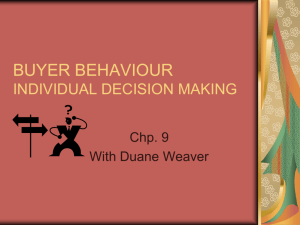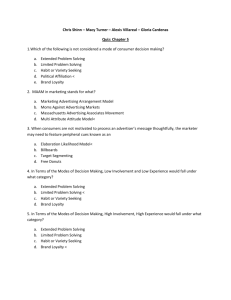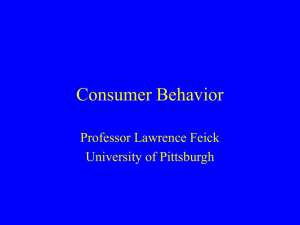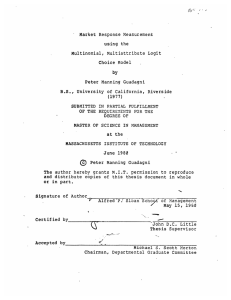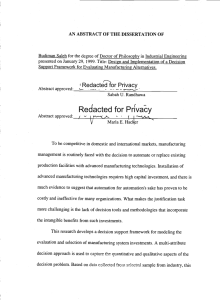Marketing 547
advertisement
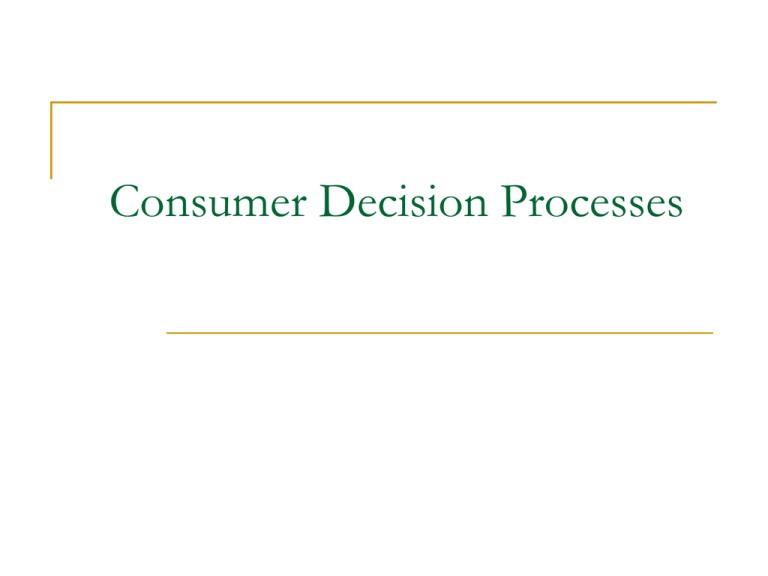
Consumer Decision Processes Consumer Decision Processes What is decision making? Process of choosing between two or more alternatives General Models of Consumer Decision Making Economic “Rational” Consumer Passive Consumer Cognitive Consumer Consumer Decision Processes General Models of Consumer Decision Making (Cont.) Emotional Consumer Random Consumer “CB” Consumer C’s buy symbols as well as products What is “rational” is in the eye of the beholder C’s do not have, nor do they want, perfect information C’s satisfyce, not optimize Consumer Decision Processes Howard-Sheth Model Extended Problem Solving (EPS) Limited Problem Solving (LPS) Habitual Decision Making Static or continuous categorizations? Consumer Decision Processes Habitual Decision Making Brands Considered -- 1 Evaluative Criteria – Simple (Is it available?) Information Sources -- 1 (Self) Types Brand Loyalty Involves repeat purchase with a high level of psychological commitment Inertia (Spurious Loyalty) Repeat purchase to minimize consumer effort Consumer Decision Processes Habitual Decision Making -- Implications May need to break consumers “habit” Sales promotion tools as incentives to switch Sales efforts to change shelf space (position) Retention of consumers Distribution is key -- is loyalty is spurious, must have product on the shelf Monitoring of competitive actions -- e.g., match price reductions Reminder ads to keep brand on the “top of mind” Consumer Decision Processes Extended Problem Solving Brands Considered -- Many Evaluative Criteria -- Complex Information Sources -- Many Consumer Decision Processes EPS: Complex Decision Process Need Recognition Prepurchase Search Evaluation of Alternatives Psychological Field 1. Motivation 2. Perception 3. Learning 4. Lifestyle 5. Attitudes Experience Consumer Decision Processes EPS: Complex Decision Process Pre-Purchase Activities Need Recognition (C’s actual state desired state) Information Search Internal External Evaluation of Alternatives Compensatory --- lack of one attribute (taste) can be compensated by another (it’s effective) Eliminate by Aspects (EBA) – set minimum cut-off rule for the level of each attribute; start with most important attribute – if a brand does NOT meet the cutoff, it is out Conjunctive Rule -- set minimum cut-off rule for the level of each attribute; look at entire set of attributes (which exceeds the minimum on the MOST attributes) Lexicographic Rule – rank attributes; choose brand that is best on most important attribute; if a tie, go to second most important attribute, etc. Affect Referral – choose brand you “feel” best about Consumer Decision Processes Unplanned Decisions Pure impulse – What the heck! Reminder/Suggested impulse – walk through dairy aisle (ah yes, I need milk) Planned impulse – I always get yogurt Marketers influence?????
